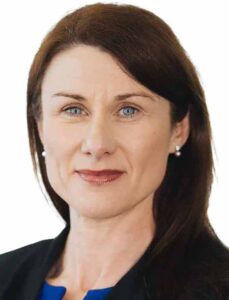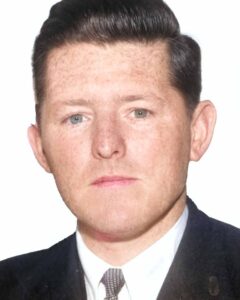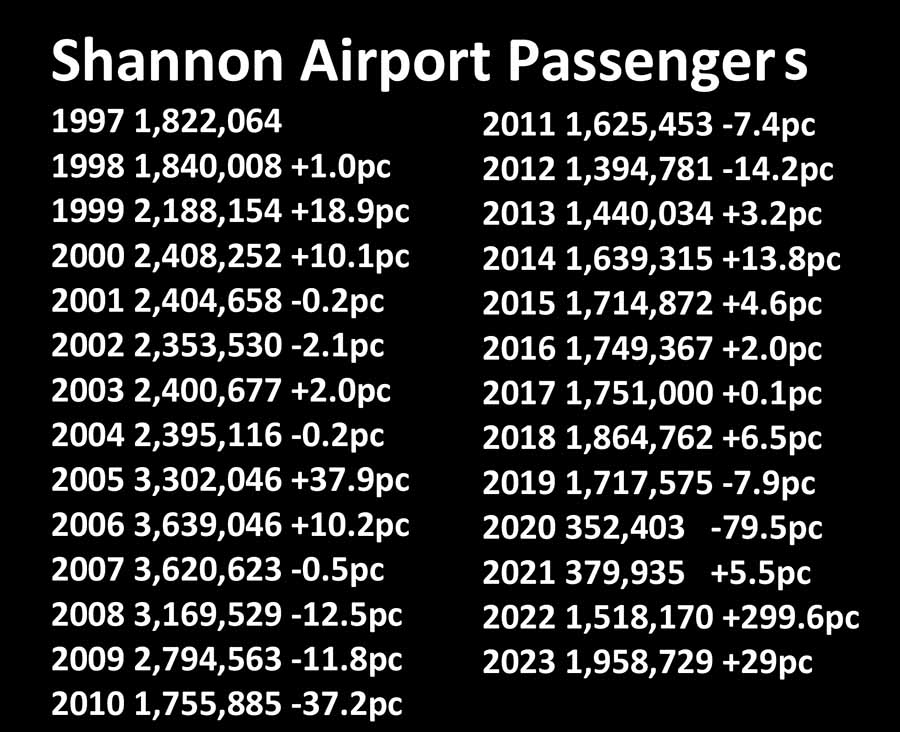
Shannon Airport Group is celebrating its tenth anniversary and is projected to reach over 2m passengers for the first time since 2009, enhanced by significant investments totalling over €178m over the past decade.
The Group’s contributions to the Irish economy amount to nearly €4 billion, supporting over 20,300 jobs and generating €643m in tax revenues, highlighting its role in driving tourism and economic growth.
Innovations at Shannon Airport include being the first in Europe to open a sensory room, offering Preclearance for US-bound passengers, and planning Ireland’s first solar farm located on an airfield, part of a broader commitment to sustainability and reducing greenhouse gas emissions.
The Shannon Airport Business Park supports over 300 companies across various industries, employing more than 10,000 professionals and positioning itself as a key hub for regional economic development while fostering future expansions.
Home to the longest runway in Ireland at 3.2 kilometres, Shannon Airport has a rich history of innovation and adaptation. It started life on 21 February 1942 to receive a scheduled service to Bristol to provide a land plane connection between England and the flying boat terminal at Foynes. On 16 September 1945, the first transatlantic proving flight, a Pan Am DC-4, landed at Shannon from Gander and on 24 October 1945, the first scheduled transatlantic commercial flight using a land plane, an American Overseas Airlines DC-4, Flagship New England, stopped at the airport on the New York City–Gander–Shannon–London route. TWA began service between New York and Paris via Gander and Shannon on 5 February 1946 and the last airlines transferred from Foynes a month later. Pan Am began their service soon afterwards.

In 1947, the “Customs Free Airport Act” established Shannon as the world’s first duty-free airport, an initiative of Brendan O’Regan, who was fortuously appointed comptroller and sales catering manager at the age of 26 in 1943. Shannon became a model for other duty-free facilities worldwide
Amid a great deal of scepticism, including a famous speech by James Dillon predicting that the rabbits would run wild on the runways of Rineanna, Shannon airport became one of the success stores of post-war Ireland.
Throughout the 1950s Shannon was a window on the world of the rich and glamorous for a nation in recession. Film stars and entrepreneurs, the rich and famous, flew through Shannon and granting occasional exclusive interviews to watchful local journalists.
The first commercial Boeing 707 jet to land in Europe touched down in September 1957. and Jet services were operating from Pan Am by mid-1960. The jet meant that Shannon was no longer a required refuelling stop-over so it had to innovate to stay relevant in a changing world.
In the absence of a regional strategy by Dublin governments, Shannon was to become the only thing resembling a regional strategy.
In 1959, the Shannon Free Zone was created, the world’s first modern free-trade zone and served as the model for FTZ’s of which there are now 231 in in 61 countries worldwide.
The zone provided special tax incentives on staff and profits to attract numerous multinational companies.
The strategy was immensely successful at first. Shannon free Airport Development Company was established in 1959 to stimulate growth through tourism and industrial development. Two years later oversaw the foundation of Shannon new town: the first in the country since the construction of New Geneva and Prosperous in the 18th century.
In 1969, it was announced that a new government agency, Aer Rianta (now the Dublin Airport Authority), would be given responsibility for Shannon Airport and Shannon Development took control of the other operations.
In its first twenty years SFADCO had created 5,000 jobs with its incentive schemes. Shannon region expanded to included Limerick City and the counties of Limerick, Clare, North Tipperary, North Kerry and South Offaly, transferred from the midlands to be part of the most prestigious and successful tourism region. Shannon opposed the building of an airport in Knock, fearing the consequences for its own business.
The tax incentives were phased out in 2003 and Shannon Development was succeeded by the Shannon Airport Group in 2014. Seven tourism attractions passed to Shannon Heritage, Brian Boru Heritage Centre, Bunratty, Craggaunowen, Dunguaire Castle,
Knappogue, King John’s Castle, Tarbert Bridewell, the GPO Witness History 1916 experience and Newbridge House Malahide and four evening experiences, Bunratty, Knappogue and Dunguaire Castles plus a traditional Irish night at Bunratty Folk Park. These have now been divested to local authorities.
Mary Considine, CEO of The Shannon Airport Group said: “As we celebrate the 10th anniversary of The Shannon Airport Group, we reflect with immense pride on our progress and achievements over the past decade. From the significant growth at Shannon Airport, with this year set to be the busiest year at the airport since 2009, to investing over €178m in infrastructure and property upgrades, we are very proud of our journey to date. “We are more than just an airport, we are driving tourism, trade and economic growth. The economic impact of the Group was nearly €4 billion according to the most recent report by Oxford Economics, while we also support 20,300 jobs in the Midwest, underscoring the significant role we play in driving the region forward.
This success would not have been possible without the unwavering support of our incredible team, our valued customers, our dedicated partners, Government and all the other stakeholders who have supported our journey. This spirit of collaboration has been the foundation of our success, and I wish to extend my gratitude to everyone who has played a part in our story so far. “Looking to the future, we are more committed than ever to continuing our legacy of innovation, sustainability, and economic development, ensuring a brighter, greener future for the Midwest region and beyond.”



